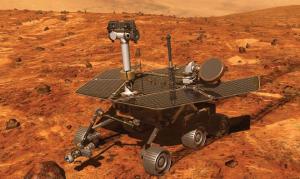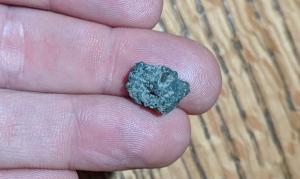Blog
Opportunities
17 February 2019
 NASA/JPL
NASA/JPLThe Opportunity rover was a wondrous explorer. It was designed to operate for about three months, but it perservered for fifteen years. It transformed our understanding of Mars. Opportunity rolled across the plains of Gusev, and there it found rocks made of basalt. Basalt forms when lava cools rapidly on a planet’s surface. This means that Mars was once geologically active like Earth. It found terrain that had been weathered by flowing water, and minerals such as hematite that typically form in water. Confirmation that Mars was once a wet world. It found hints that Mars might have once been hospitable to life, but it didn’t find any direct evidence of life on Mars. Because of Opportunity we know that Mars was once a warm and wet world with a rich atmosphere. Very similar to Earth.
But now Mars is a cold and dry world. One where vast dust storms can rage across its surface. It was one such storm that ended Opportunity’s mission. In June a massive dust storm engulfed Mars, blocking the sunlight Opportunity needed to stay warm and active. The rover’s last message to Earth was a status report. Translated to English, it said “My battery is low and it’s getting dark.” On June 12 Opportunity entered a state of hibernation from which it never awoke. On February 13th 2019, Opportunity was given a final farewell. Billie Holliday’s “I’ll Be Seeing You” was beamed to the Martian rover as a poetic end to its mission. Warm wishes sent to a cold robot on a harsh world.
 Brian Koberlein
Brian KoberleinOn that same day a collegue of mine gave me a gift: a small stone no bigger than my fingertip. It didn’t look like much, just a craggly gray stone similar to any piece of gravel you’d find by the side of a road. But it is a stone with a wondrous tale.
Once, long ago, a meteor struck the surface of Mars. It created a crater perhaps 10 kilometers across, and threw debris from the Martian surface into space. Much of this debris eventually fell back to Mars, but a few rocks found themselves adrift in orbit around the Sun.
These Martian rocks contained a history of Mars. Like the rocks of Gusev plains, they were formed from Martian basalt, when Mars was geologically active. Like the terrain Opportunity explored, these rocks were weathered by Martian rivers and seas. Perhaps Martian life called them home for a time, and left evidence of their passing.
For about a million years these rocks floated in space. Round and round the Sun they traveled, like the asteroids and planets, pushed and pulled by the gravity of those larger bodies. As humans left their African home to travel the world, these rocks drifted between Earth and Mars. As humans learned to launch probes into space, one of the rocks drifted ever closer to Earth. Then in July of 2011, just 8 years after Opportunity was launched towards Mars, this particular rock reached the skies of Earth over Morocco. It was a small rock, only about 10 kilograms, and Earth’s atmosphere caused it to shatter into two main pieces and several smaller fragments.
The bright glow of this meteor attracted the attention of Moroccan locals. Naturally it didn’t take long for meteorites to be found. Fragments were found near the small town of Tissint, and so they are known as the Tissint meteorite.
Martian meteorites are extremely rare. Particularly ones that have been witnessed falling. That makes it extremely useful for studying the geology of Mars. Fragments of the Tissint meteorite were recovered so soon after impact that it’s considered “uncontaminated.”
Not surprisingly, several fragments went to various research universities. A large fragment went to London’s Museum of Natural History, and another large fragment went to Vienna’s Natural History Museum. But one of the fragments found its way to a colleague friend of mine who studies the early Martian atmosphere. Since he’s retiring this year, he wanted to give the fragment to me.
So on the day humanity said farewell to Opportunity, I was gifted a piece of the Red Planet. And like this small stone, Opportunity was also a gift.
The probes we build and send beyond the sky are in many ways the best of us. Opportunity was strong and curious. It journeyed to an unexplored wild and sent us stories in return. It gave us knowledge about Mars and about ourselves.
And with that knowledge, there will more opportunities to explore.